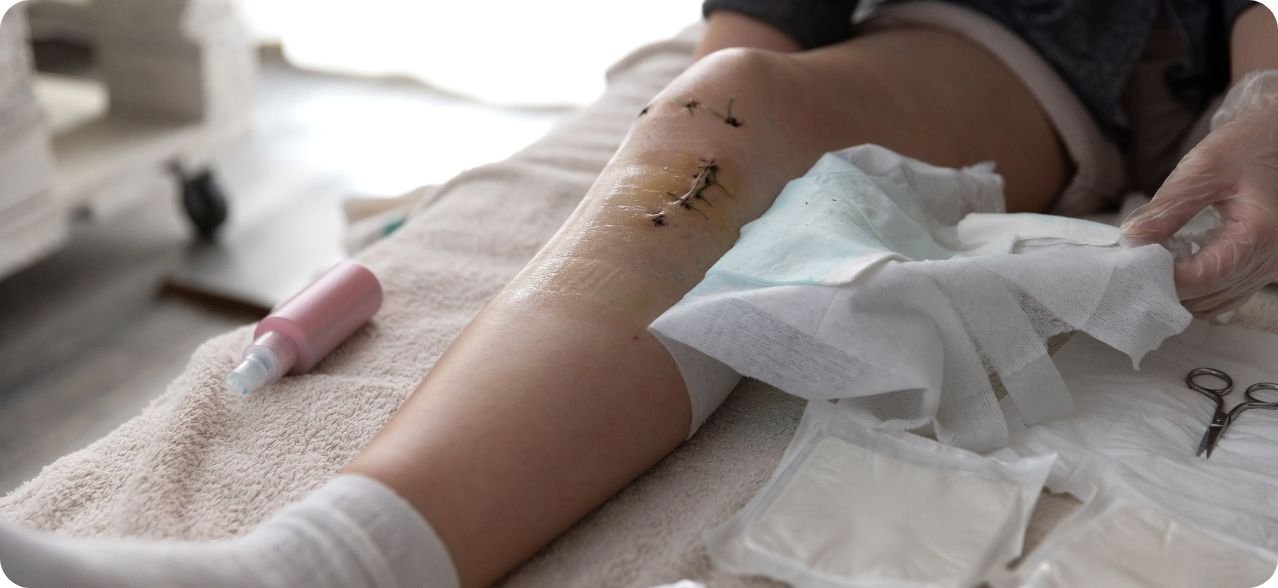ACL Injury
ACL-injuries are common, especially in the sporting population, and can have a devastating effect on the lives of those injured. Best Physiotherapy has a special interest and expert knowledge in treating ACL injuries. Our director Cameron has published multiple research articles about ACL injuries as part of this PhD and has extensive lived experience of ACL injury, having suffered 4 ruptures himself.
Re-rupture is common after an ACL surgery, in both the injured side and the non-injured side. Further, return to previous level of sport after an ACL injury is poor with up to 45% of those injured not returning to their previous activity levels. The team at Best Physiotherapy have dedicated countless hours into understanding why this is the case and that knowledge is what both sets us apart and ensures we can manage your ACL rehabilitation to the highest quality and standard.
Causes of ACL injuries
ACL injuries most often occur from direction changes in sport, either as a pivot on a bent leg where the upper body rotates on a planted foot, or a ‘plant and cut’ action. They can also happen during a sudden stop on a single leg from pace or from a direct blow.
Some common ways to injure an ACL include:
Sports-related mechanisms
Motor vehicle accidents
Slip and fall accidents.
Symptoms of ACL injuries
The hallmark symptom of an ACL injury is instability. If you are experiencing a feeling that your knee is going to give way and you do not feel confident in weight bearing, it could be an indication of an ACL injury. Signs and symptoms of an ACL injury can be diverse, these include:
At time of injury: A pop sound or sensation
At time of injury: A feeling that something major has happened with associated shock symptoms like nausea or lightheadedness
At time of injury: Severe pain that may subsides within a few minutes, or very little pain
Significant swelling that comes on within a few hours of injury
Limited range of motion in the knee joint
Instability or the feeling of giving way in the knee joint
Difficulty with walking or standing
To have surgery or not to have surgery?
ACL ruptures can be either surgically or conservatively managed. Both options involve a long physiotherapy-led rehabilitation process with a minimum of 12 months off sport. There are many factors that contribute to the decision making around whether or not you should have an ACL reconstruction. These include age, usual sport type and level, whether your knees are hyperextensive, and most importantly, whether you have continued instability even after a period of physiotherapy-led rehabilitation.
Conservative ACL management involves a combination of rehabilitation protocols that give the ACL the best chance to heal and then restore knee function. Some types of ACL ruptures can heal whereas others can’t but if your ACL does not heal this does not necessarily mean you need surgery. Many people function perfectly and play sports with ACL deficient knees. It requires a strengthening and proprioception rehabilitation program to ensure knee stability and prevention of subsequent injuries.
Reconstruction surgery involves a keyhole operation where a portion of tendon is harvested (usually from your patella tendon or hamstring tendon) and then attached inside the knee joint to replace the original ACL. It should be noted that the surgery in itself is not the quick fix and a commitment to both preoperative rehabilitation as well as a year of post-operative rehabilitation needs to be made to mitigate risk of rupturing your new ACL graft.
Rehabilitation of ACL injuries
At Best Physiotherapy we use a staged rehabilitation strategy for ACL injuries (these vary slightly, but are similar for both conservative and surgical pathways). They include normalising range of motion, addressing muscle activation and imbalances, addressing altered proprioception and balance (very important for prevention of future injuries) and returning to sports specific training.
During your sessions we may employ a range of management modalities.
Manual Therapy: Our physiotherapists use manual techniques such as massage, dry needling and joint mobilization to alleviate pain, stiffness, and restore joint mobility.
Exercise Therapy: Specific exercises are prescribed to strengthen the muscles around the knee joint and improve the range of motion. The exercises may include stretching, resistance training, and functional exercises.
Neuromuscular Retraining: Our physiotherapists use specialized techniques and equipment such as biofeedback and electrical stimulation to help retrain the control of the affected knee joint.
Balance and Proprioception Training: These exercises are designed to improve balance, coordination, and proprioception (awareness of body position) to prevent future injury.
Return to sport guidance: a staged return to training, contact and sport participation will be guided by your physiotherapist.
Referral: in some cases, our physiotherapists may refer you to a specialist such as an orthopedic surgeon or sports physician for further evaluation and management.
Education and Prevention: Our physiotherapists provide education on specific warm-up and cool-down exercises, technique and activity modification to prevent future injury. There is great evidence that shows specific warm ups before playing sports reduce ACL injury risk.
ACL injuries can have a season ending, sometimes life changing effect on your goals and sporting activities. At Best Home Therapy, at 72 Maribyrnong Street, Footscray, we are experts who love being the ones guiding you through the process of getting back to doing what you love.



